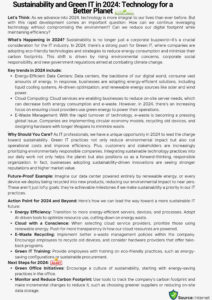Unveiling Snowflake: Revolutionizing Cloud Computing with Data Warehousing 2024

In the realm of cloud computing, where data is the new currency, efficiency and scalability are paramount. Snowflake, a data warehousing platform born in the cloud, has emerged as a game-changer, redefining how businesses manage, analyze, and derive insights from their data. In this article, we delve into the intricacies of Snowflake, exploring its architecture, features, benefits, and its impact on the landscape of cloud computing.
Understanding Snowflake:
Snowflake is not just another data warehouse; it represents a paradigm shift in data management. Unlike traditional data warehouses that require substantial upfront investments in hardware, infrastructure, and maintenance, Snowflake operates entirely in the cloud. This cloud-native approach offers unparalleled flexibility, enabling organizations to scale resources up or down based on demand, without worrying about hardware constraints.
Architecture:
At the heart of Snowflake’s architecture lies its unique separation of storage and compute layers. Data is stored in a centralized repository called the Snowflake Data Store, which is designed for limitless scalability and durability. Meanwhile, compute resources, known as virtual warehouses, can be provisioned on-demand to process queries and perform analytics tasks. This decoupled architecture allows users to independently scale storage and compute, optimizing performance and cost-efficiency.
Key Features:
- Multi-cluster Shared Data Architecture (MPP): Snowflake leverages a multi-cluster shared data architecture, enabling parallel processing of queries across multiple compute clusters. This distributed approach accelerates query performance, particularly for complex analytical workloads.
- Automatic Scaling: Snowflake automates resource provisioning and scaling, eliminating the need for manual adjustments. Compute resources scale up or down dynamically in response to workload fluctuations, ensuring consistent performance and cost-effectiveness.
- Zero-Copy Cloning: Snowflake’s zero-copy cloning feature enables instantaneous creation of database clones without duplicating data. This capability is invaluable for development, testing, and analytics scenarios, where rapid provisioning of isolated environments is required.
- Data Sharing: Snowflake facilitates seamless data sharing between organizations, departments, or business units, without the need for data movement or replication. This feature streamlines collaboration and enables real-time access to shared data assets.
- Security and Compliance: Snowflake prioritizes data security and compliance, offering robust encryption, access controls, and audit logging capabilities. It adheres to industry-leading security standards, such as SOC 2 Type II, GDPR, and HIPAA, ensuring data confidentiality and integrity.
Benefits:
- Scalability: Snowflake’s elastic architecture enables organizations to scale resources dynamically to accommodate growing data volumes and user concurrency. Whether processing terabytes or petabytes of data, Snowflake can seamlessly adapt to evolving business needs.
- Performance: By harnessing the power of parallel processing and distributed computing, Snowflake delivers exceptional query performance for even the most complex analytical workloads. This translates to faster insights and improved decision-making.
- Cost Efficiency: With Snowflake’s pay-as-you-go pricing model and automatic scaling capabilities, organizations can optimize their cloud spend by only paying for the resources consumed. Additionally, the separation of storage and compute allows for granular cost management and optimization.
- Simplicity: Snowflake abstracts the complexities of infrastructure management, allowing users to focus on data analysis and innovation rather than infrastructure maintenance. Its intuitive interface and SQL-based query language make it accessible to both data engineers and business users.
- Real-Time Insights: By enabling real-time data sharing and analytics, Snowflake empowers organizations to derive actionable insights from their data faster. This agility is essential in today’s fast-paced business environment, where timely decisions can make all the difference.
Impact on Cloud Computing:
Snowflake’s rise to prominence has had a profound impact on the landscape of cloud computing. Its innovative approach to data warehousing has sparked a wave of modernization, prompting organizations to rethink their data strategies. Furthermore, Snowflake’s success has paved the way for a new breed of cloud-native data platforms, inspiring competition and innovation in the market.
In conclusion, Snowflake represents the future of data warehousing, offering unparalleled scalability, performance, and simplicity in the cloud. As businesses continue to embrace digital transformation and data-driven decision-making, platforms like Snowflake will play an increasingly pivotal role in driving innovation and competitive advantage.
By harnessing the power of Snowflake, organizations can unlock the full potential of their data, gaining actionable insights that propel them towards success in the digital age. With its revolutionary architecture, features, and benefits, Snowflake has undoubtedly earned its place as a cornerstone of modern cloud computing.






